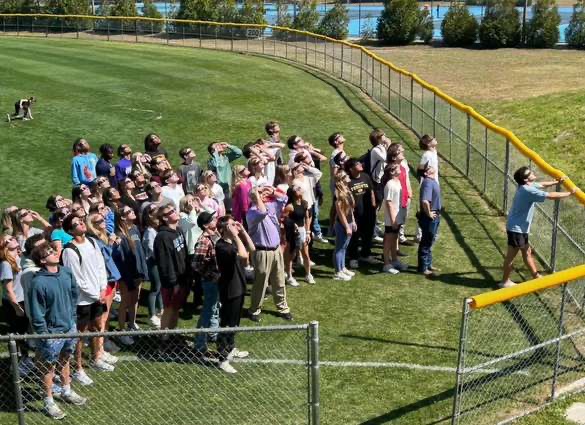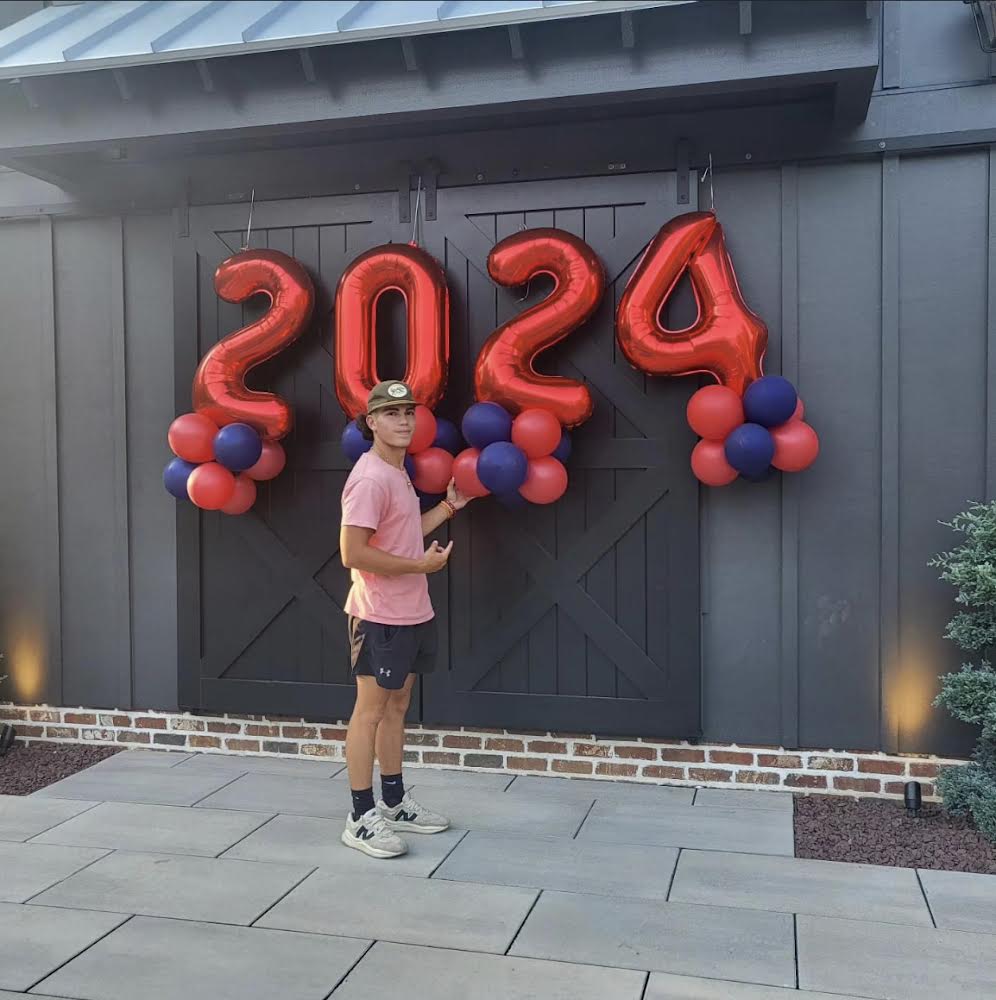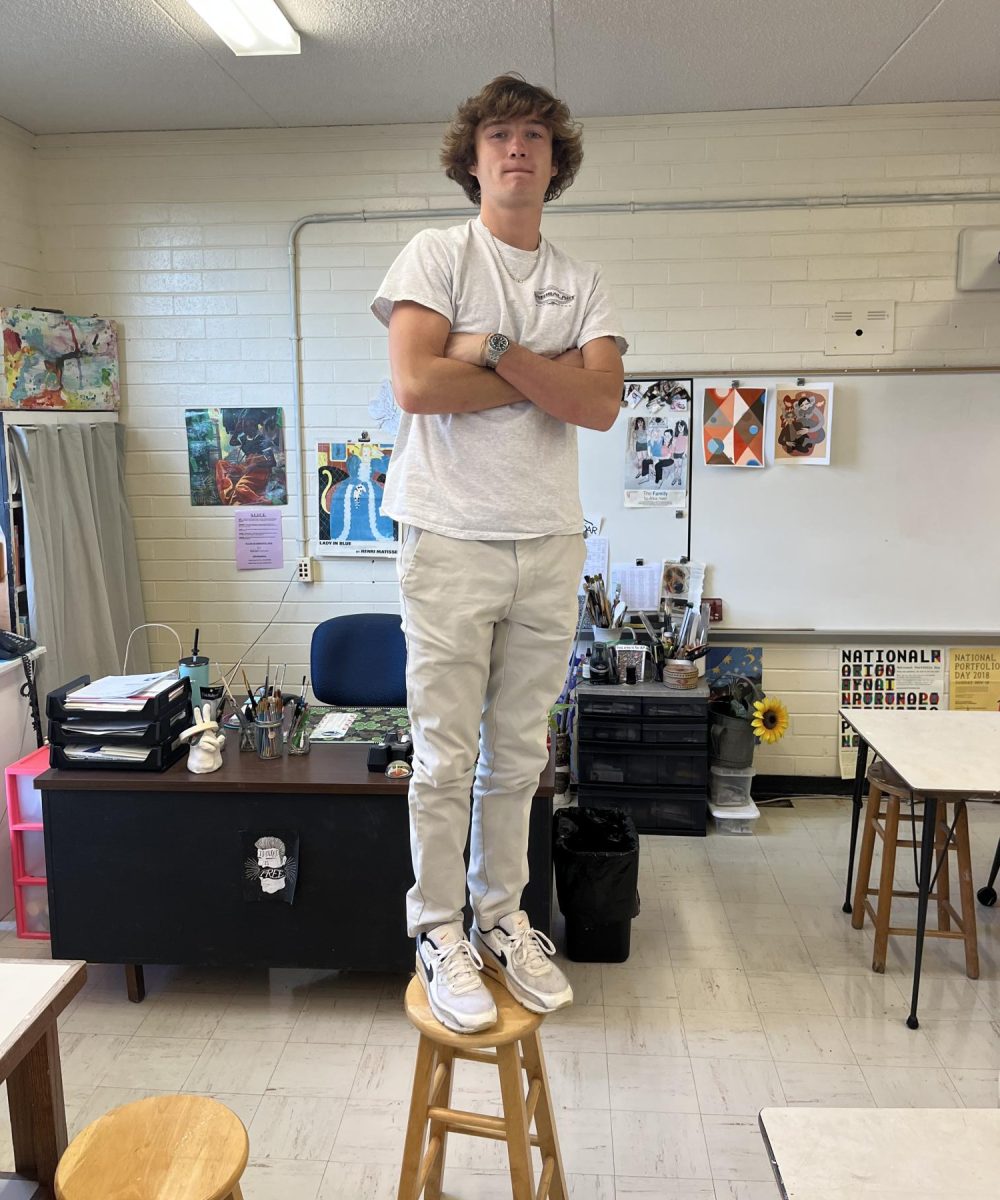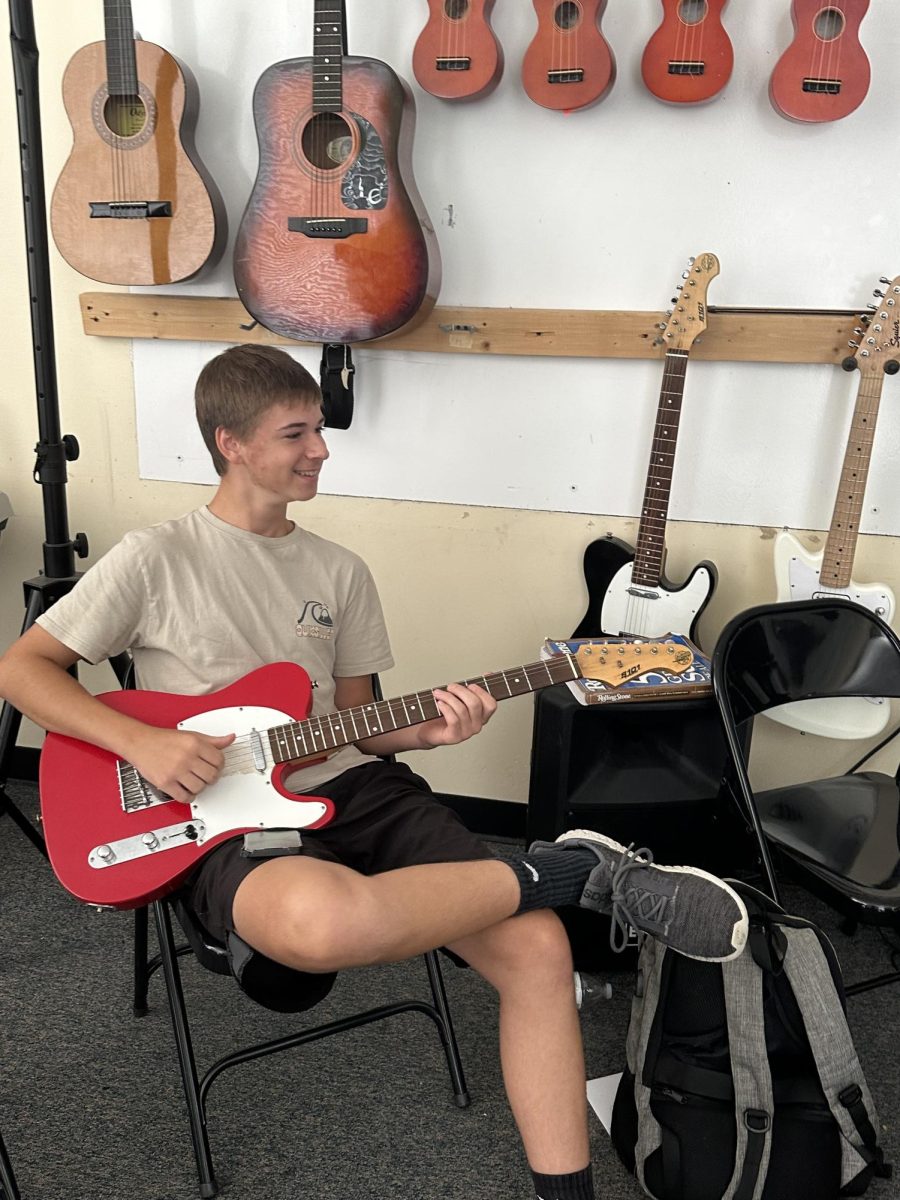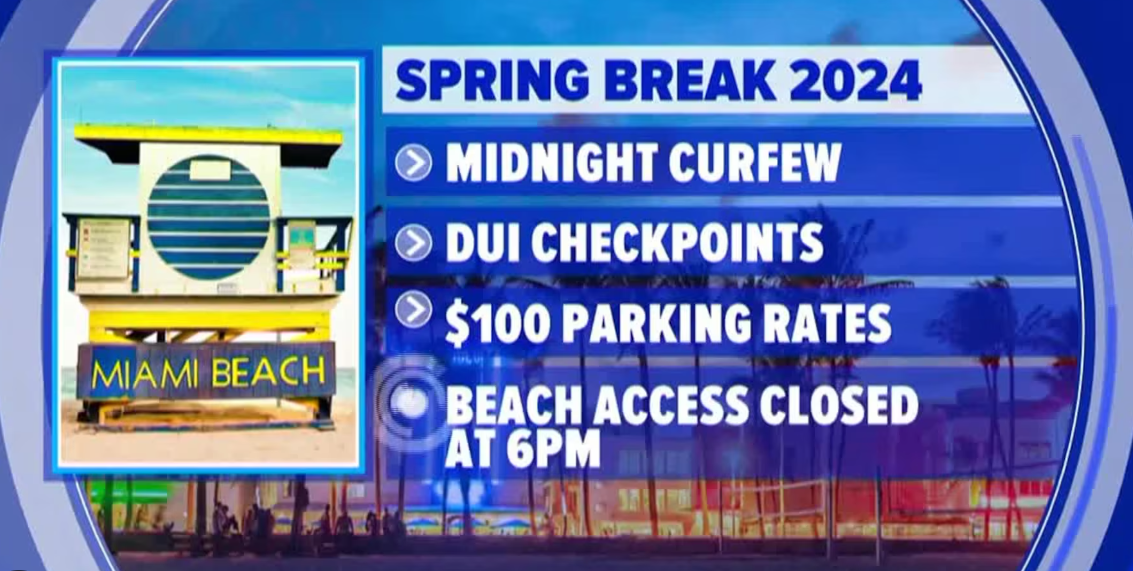On April 8, our 6-12th grade students and their buddies (each senior is paired with a fifth-grader, each junior with a fourth-grader, etc.) got to experience the solar eclipse together from our softball field. For safety and for fun, the Parents Organization supplied students with eclipse glasses and Moonpies. For many of our students, it was the first time they had seen an eclipse, but most of our Upper School students were able to experience the 2017 solar eclipse. Whether it was their first or second time viewing an eclipse, it was a fantastic learning and bonding experience for our students and a fun break from our day-to-day routine.
Because the path of totality stretched from Mexico to Maine, we were only able to reach 75% totality in our region (meaning the sun was only three-quarters covered). Though it did not get completely dark, there was a noticeable change in the ambience; there was a sort of yellow-orange glow, almost like a sunset but in the middle of the day. For those that were able to experience total darkness in locations like Zaragoza, Mexico, and Indianapolis, Indiana, the eclipse lasted for as long as 4 minutes and 30 seconds–a record time!
The last solar eclipse that the US saw was on August 21, 2017, and it was the first visible eclipse in the state in almost 40 years. We were fortunate to experience 92% totality, as the path of totality stretched from Charleston, South Carolina, to Oregon. Because of the near-total coverage of the sun, there was a dark orange haze outside, though we still didn’t get to experience night during the day. Just like this year, RMA students in 2017 had a buddy event so that they could enjoy an extra memorable first day of school.
If you’re not sure of the science behind our 2017 and 2024 events, solar eclipses are celestial events that occur when the sun, moon, and Earth line up, and only occur when the moon is at the new moon phase (which means the sun is shining on the back of the moon that we don’t see). From here on Earth, it appears as if the moon is covering the sun, but it is only between the sun and Earth. Solar eclipses are rare compared to lunar eclipses (which occur at the full moon phase and when the Earth is precisely between the moon and the sun) because solar eclipses are only visible from such a small portion of earth at a time, so we are lucky to have seen at least 1 in our lifetimes. Different regions experience different levels of totality depending on the angle of the earth in the direction of the sun. The moon’s shadow cast on Earth is only about 300 miles wide and is separated into two parts: the umbra (total coverage of the sun) and penumbra (partial coverage of the sun). If you would like to see an interactive model of the eclipse, you can look at NASA’s Eyes on the Solar System.
Because of the rarity and incredible nature of the solar eclipse, many people have come up with superstitions and conspiracies surrounding the event. Some believe that the eclipse is an evil omen, predicting the end of the world or some sort of disaster. Some conspiracists use this event to push their outlandish fantasies, like the notion that a group of “elites” is using the event as an excuse to impose martial law because local governments in areas with totality often declare a state of emergency because so many tourists come to view the eclipse in totality. Others who aren’t as extreme believe the eclipse is the reason for hyperactivity in animals and children, using it as an excuse for bad behavior. While this can be true for animals, as the change from light to dark in the middle of the day can disrupt the circadian rhythm of some animals (like owls who are nocturnal), there is no evidence that proves that the eclipse affects human behavior.
The next solar eclipses are expected in 2044 and 2045 so our youngest Eagles (Class of 2038) will have started their adult lives by the time the next eclipses come around!

